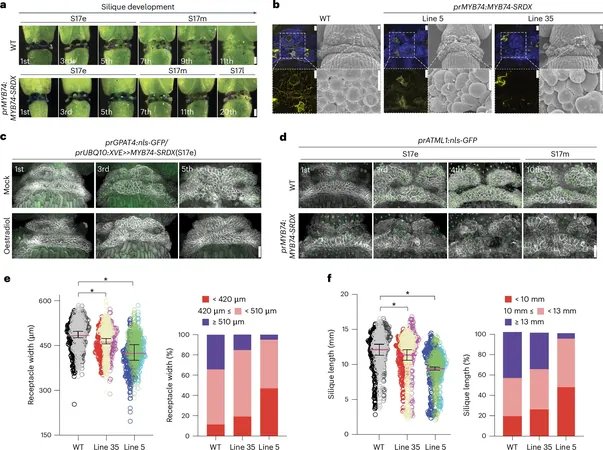
Unlocking the Secrets of Plant Cell Transformation: A Breakthrough for Fruit Growth Control!
2025-04-11
Author: Daniel
Revolutionary Research Unveils Plant Survival Strategies
A groundbreaking study has unveiled the intricate mechanisms behind how plants transform leftover cells into vital epidermal cells during abscission—the natural process where plants shed flowers, leaves, and fruits. This discovery not only sheds light on plant survival tactics and growth strategies but also hints at major advancements in agricultural technology and food production.
Inside the Study: Insights from Nature Plants
Published in the prestigious journal *Nature Plants*, this research was spearheaded by Professor June M. Kwak from the Department of New Biology at DGIST, in tandem with Professor Jong Kyoung Kim’s innovative team from POSTECH.
The Magic of Abscission: Transforming Residual Cells
Plants have an astounding capability to intelligently shed their unneeded organs, typically in response to seasonal shifts or growth completion. The study found that within the abscission zone, residual cells—a group of remaining cells—are not static but actively convert into epidermal cells through a sophisticated three-step process that forms essential protective cuticle layers.
The Dance of Genes: Photosynthesis to Defense
In the initial phases, residual cells pulse with activity, expressing genes tied to photosynthesis. As the transformation progresses, however, the focus shifts: these photosynthesis genes take a backseat while stress-resistance genes ramp up their expression. This adaptive response acts as a survival strategy, equipping the plant to handle potential threats during vulnerable moments.
The Final Touch: Shielding the Newly Exposed Surface
In the concluding phase, genes that orchestrate cuticle biosynthesis spring into action, culminating in the development of a robust protective layer over the newly-exposed cells. The research spotlighted the crucial transcription factor, MYB74, which plays a pivotal role in this cellular transformation; without it, the conversion process is notably stunted.
Why Not Just Harden? The Case for Epidermal Cells
Most plants react to wounding by constructing a rigid protective layer, usually comprised of lignin and suberin. However, this study seeks to explain why plants in the abscission zone opt for a different strategy by converting residual cells into epidermal cells. The findings indicated that while lignin creates rigidity hindering growth, epidermal cells facilitate continued expansion of the plant’s interior.
Crucial for Fruit Development: The Role of Residual Cells
The optimal growth of fruit hinges on the receptacle—the foundational structure housing residual cells. If these residual cells do not successfully morph into epidermal cells, the entire growth process of the receptacle is stunted, leading to compromised fruit development. The research conclusively shows that by converting residual cells into protective epidermal layers, plants enhance their capacity for fruitful growth.
A Bright Future for Agriculture
This remarkable research not only elucidates the fascinating world of plant biology but also lays the groundwork for innovative agricultural practices that could maximize crop yields and improve food production efficiency. The future of fruit growth control may very well rest on this newfound understanding of plant cell transformation!

 Brasil (PT)
Brasil (PT)
 Canada (EN)
Canada (EN)
 Chile (ES)
Chile (ES)
 Česko (CS)
Česko (CS)
 대한민국 (KO)
대한민국 (KO)
 España (ES)
España (ES)
 France (FR)
France (FR)
 Hong Kong (EN)
Hong Kong (EN)
 Italia (IT)
Italia (IT)
 日本 (JA)
日本 (JA)
 Magyarország (HU)
Magyarország (HU)
 Norge (NO)
Norge (NO)
 Polska (PL)
Polska (PL)
 Schweiz (DE)
Schweiz (DE)
 Singapore (EN)
Singapore (EN)
 Sverige (SV)
Sverige (SV)
 Suomi (FI)
Suomi (FI)
 Türkiye (TR)
Türkiye (TR)
 الإمارات العربية المتحدة (AR)
الإمارات العربية المتحدة (AR)